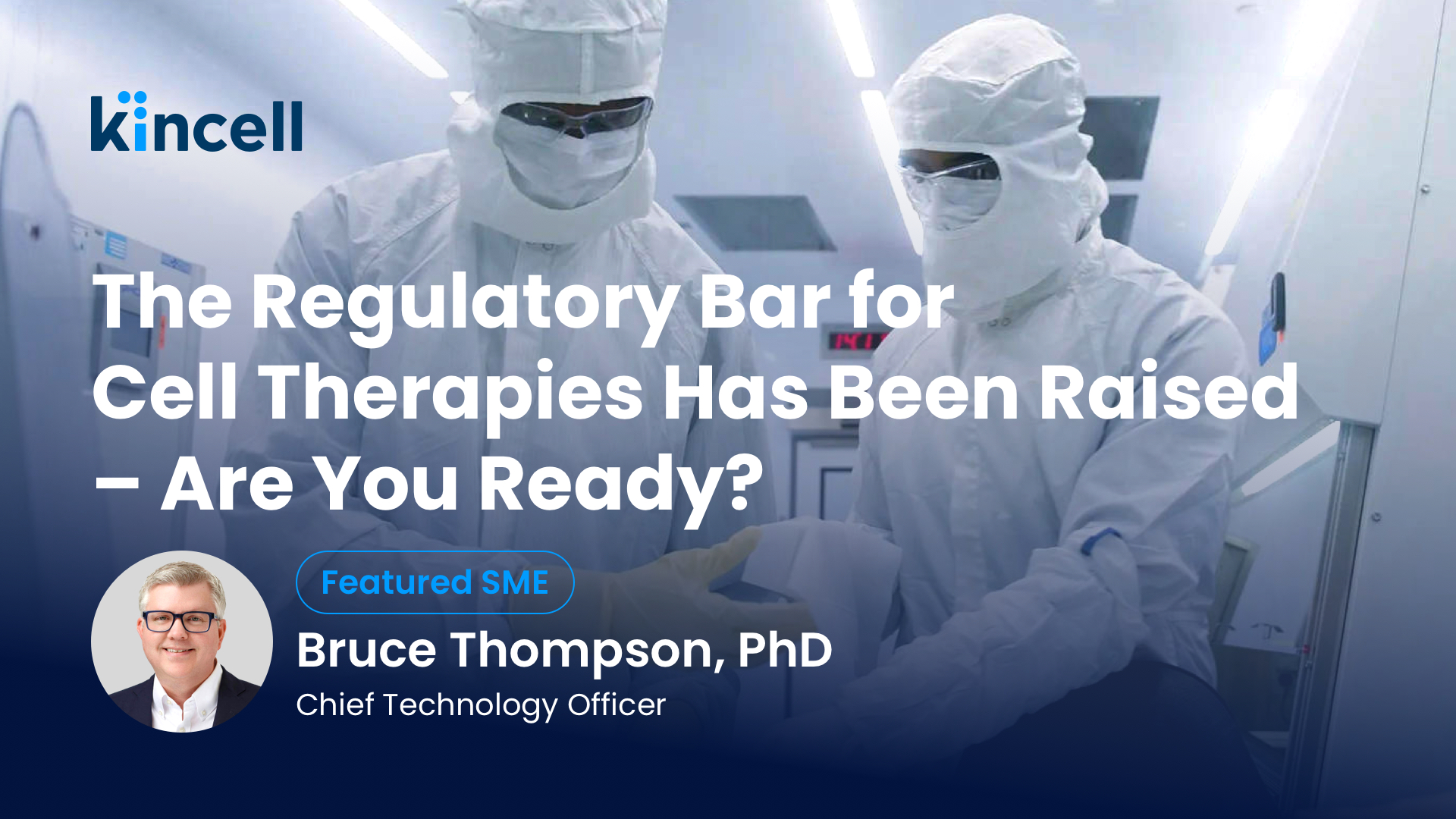News & Insights

Since 2024, four different cell and gene therapy programs have hit the same wall: manufacturing readiness. Capricor’s CAP-1002 (allogeneic cell therapy for Duchenne muscular dystrophy) received a Complete Response Letter (CRL) for incomplete clinical, CMC, and non-clinical packages. Ultragenyx’s DTX401 (AAV gene therapy for GSD-Ia) was declined due to manufacturing data gaps and facility readiness. Rocket Pharmaceuticals’ Kresladi (lentiviral gene therapy for LAD-I) was delayed due to unresolved CMC questions, and the FDA declined to approve Atara Biotherapeutics’ Tabelecleucel due to manufacturing concerns at a third-party facility.
The filings spanned various indications, platforms, and innovators, yet none of these therapies were delayed or declined due to concerns about patient safety or efficacy. Regulators are clearly signaling that without a robust CMC strategy, validated analytics, and inspection-ready operations, commercial approvals will not be granted. After all, what the FDA grants when approving a Biologics License Application (BLA) is essentially a license to manufacture that product for patients. These regulatory actions are not outliers. According to recent counts, roughly three-quarters of CRLs from 2020 to 2024 are attributed to quality or manufacturing deficiencies, process control gaps, deficient stability packages, unvalidated methods, or findings from GMP facility inspections. The regulatory bar is higher. The question is: are you ready to meet it?
What Is a Complete Response Letter?
A CRL is the U.S. FDA’s formal notice that a BLA cannot be approved at the end of its current review cycle. Although it closes that cycle, a CRL is not a rejection; it pinpoints the deficiencies that must be fixed before the agency will grant approval and often suggests paths to resolution. A CRL spells out each shortcoming and can provide a clear roadmap for resubmission; it also represents a significant cost for the innovator, as it delays revenue generation, erodes patent life, and can dampen investor confidence. The question is, how can you avoid a CRL and launch your product to the market on time and on budget?
Evolving Risk Profiles Demand Greater Regulatory Maturity
In conversation with Dr. Bruce Thompson, Chief Technology Officer at Kincell Bio, he noted that most first-generation autologous CAR-T programs have targeted end-stage cancers, where the risk-benefit equation favors rapid access, even when manufacturing is highly bespoke and variable. But Thompson sees the next wave of cell therapies moving into chronic autoimmune diseases, driving larger patient numbers and a new emphasis on consistency.
“As we move into autoimmune conditions, the risk-benefit ratio is going to look very different. That means the products have to be much better characterized,” he said. In practical terms, developers must assemble late-stage quality packages far earlier, often before Phase II, because regulators will no longer accept wide assay ranges or “black-box” unit operations when treating broader indications, particularly patients who are not terminally ill.
Adequate Cell Therapy Characterization Is an Ongoing Debate
The temptation by regulators and developers to apply traditional biologics criteria to cell therapies doesn’t always make sense. For instance, for antibody drugs, mass spectrometry and biophysical panels can describe more than 95% of a molecule’s critical quality attributes. Compare that with a CAR-T infusion that may contain five lymphocyte subtypes “across various differentiation states,” as Thompson puts it. Even a sterile, low-endotoxin lot might include 10% of cells whose phenotype and function are unknown. This uncertainty underpins the FDA’s insistence on new potency and identity assays capable of predicting behavior once administered to the patient.
Recent agency workshops have warned that sluggish or poorly predictive potency tests are a root cause of clinical holds and CMC amendments. However, Thompson contends that we need to remind ourselves of the intended purpose of potency assays, which is to measure batch-to-batch consistency of biological activity; it is not necessarily a marker of clinical efficacy.
Thompson points out that cryopreservation is yet another challenge for cell therapy products. Two cell therapy lots with identical potency at release can exhibit very different behavior after thawing if one contains a large population of pre-apoptotic cells. Several factors influence the consistency of a final cryopreserved cell product, including formulation, fill volume, final container, controlled-rate freezing profile, storage time and temperature, thaw rate, hold time, and handling, all of which can impact the recovery of the cell product as it is administered to the patient. Using robust protocols to formulate, freeze, store, and thaw these living drugs will help to minimize the negative impacts on cell health.
Control the Controllable
While the debate will continue over cell therapy characterization and scientific understandings will advance, Kincell Bio encourages pragmatic thinking about what developers can and can’t control. Patient biology is a variable; facility and operations performance cannot be.
This philosophy underpins Kincell’s ongoing pre-approval inspection (PAI) approach, an internal effort to operate every suite as though an FDA inspector could arrive tomorrow. The evolution of an organization’s approach to commercial readiness is a financial and resource commitment that must be balanced with client needs. PAI readiness ensures that Kincell facilities, documentation, and quality systems meet FDA expectations for clinical and commercial manufacturing, supporting smooth regulatory review and successful product launches. Operating under this framework mitigates many of the factors that have contributed to the CRLs the industry has experienced over the last couple of years. By aligning PAI readiness with the client’s development progress through clinical trial phases, including pivotal or registrational trials, Kincell has ensured a cost-efficient development path for innovators moving their products toward commercialization.
Building In Quality Early
CMC challenges are the other side of the coin, and the message is pretty straightforward; phase-appropriate no longer equates to “minimal” CMC. Thompson asks us to remember that even Novartis’ benchmark therapy Kymriah, approved in 2017, spent many years in an academic lab at the University of Pennsylvania before its three-year sprint to licensure. With various new pathways for the accelerated approval of these emerging therapies, it is critical to ensure that robust CMC development occurs in a meaningful way, such that each phase of clinical development is coupled with the appropriate product characterization.
Kincell’s strategy is to embed “regulatory design thinking” from the first tech-transfer package. This approach involves mapping critical quality attributes and designing robust manufacturing processes well in advance of pivotal trials. This front-loading approach not only supports smoother FDA reviews but also avoids costly facility retrofits to meet commercial demand.
Kincell Bio Is a Key Ally for Cell Therapy CMC Readiness and Manufacturing Control
The FDA’s job is currently a highly challenging one. Ultimately, the FDA must translate its core tools (safety, identity, strength, and purity) and apply them to an astounding range of advanced therapies, each with its own set of nuances, not to mention the complexities of patient-to-patient variability.
As cell therapy CMC and manufacturing experts, Kincell Bio’s philosophy is to treat robust quality not as a hurdle, but as a catalyst for scientific progress. But what does this mean? We will be releasing a series of five articles that discuss strategies and tactics for meeting the current expectations of the FDA and other leading regulators. The topics of these articles will include:
- CMC strategy as a differentiator
- Analytics built for product confidence
- Scalable manufacturing starts early
- PAI-ready by design
- How scientific partnerships must evolve throughout a program
The Kincell team is excited to explore these topics with you. If we can help advance your program, please don’t hesitate to reach out.
Featured SME

Bruce Thompson, PhD
Chief Technology Officer
Bruce Thompson, PhD, is Chief Technology Officer at Kincell Bio, bringing more than 28 years of experience in cell and gene therapy development and manufacturing. He was the founding CEO of Kincell, where he built the technical and operations team and launched the company’s CDMO offerings. Previously, he held leadership roles at Resilience, Lyell Immunopharma, and Fred Hutchinson Cancer Research Center, where he led GMP manufacturing for multiple active clinical programs and supported six IND filings. Earlier in his career, Bruce spent nearly a decade at Pfizer in Pharmaceutical Sciences. He holds a B.A. in Biology, an M.S. in Biochemistry from The Ohio State University, and a Ph.D. in Microbiology and Immunology from the University of Louisville.
